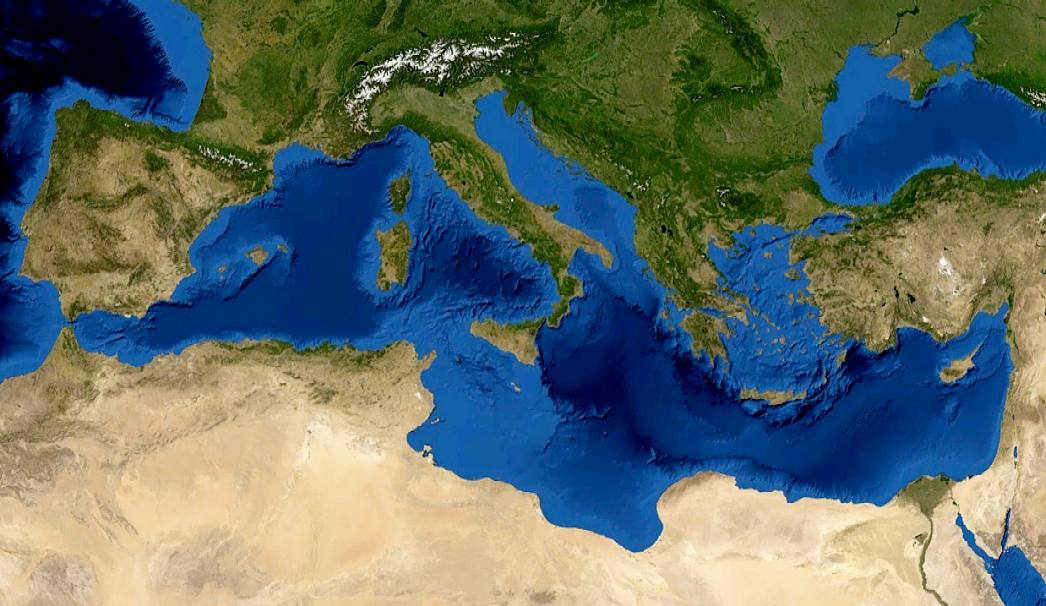It is said that the origins of the expression “to go round the bend” originated in the Middle East, specifically the Strait of Hormuz at the southern tip of the Gulf waterway. The story goes that there, just off Oman’s Musandam Peninsula, was the location of Telegraph Island, so named because it was the spot where a telegraphic relay station was established by the British in the 19th Century. It used to be manned by a single operator for months on end, a rather solitary and difficult posting that made British officers yearn to leave the island. This would require a journey around the bend of the Strait of Hormuz for the journey home.
The station has long since abandoned though its history is a reminder of a colonial past, of empires on which the sun finally set. Over the decades the term has come to refer to a disturbed state of mind and, to be fair, this is an area where the waters may be calm but the politics is turbulent. On the other side of the Musandam lies Iran, which has the longest Gulf coastline and has often threatened to disrupt traffic through the Strait of Hormuz, the world’s most important oil and gas transit point.
The outbreak of hostilities between Iran-backed Palestinian militant group Hamas and Israel has again revived fears of a potentially wider regional war that would endanger maritime security through the strait. It must be noted that while the strait at its narrowest point is only around 40km wide, it is virtually impossible for a single country to physically shut down the body of water. However, the Iranians have used tactics that have endangered maritime traffic in the past.
These tactics have included the seizure of oil tankers by Iran’s Islamic Revolutionary Guard Corps Navy (IRGCN), the latest of which occurred in July this year. Two other attempts were foiled by the US navy.
The Strait of Hormuz is a critically important maritime chokepoint through which around one fifth of global oil demand transits every day. Approximately 19.5mn b/d of crude oil and refined products was shipped from the Gulf through the Strait of Hormuz in Q1 according to shipping data provider Kpler. All exports from Qatar’s 77mn t/y and Abu Dhabi’s 5.8mn t/y capacity LNG export facilities also have to transit the strait, as will volumes from Adnoc’s planned 9.6mn t/y Ruwais facility when it comes online towards the end of the decade. The loss of a single molecule of gas in a jittery gas market would send gas prices surging again ahead of the northern hemisphere winter.
Any disruption to the smooth flow of shipping through Hormuz would therefore have a huge impact on the global economy. But despite Iran’s periodic threats, the Islamic Republic has never taken significant steps towards such an act.
Yet the country that would be most hurt by disruption to traffic through the Strait of Hormuz would be Iran since with the exception of a small under-utilized facility at Jask it has no other export outlets for its crude oil except its Gulf terminals. Tehran has been ramping up exports of crude oil despite Trump-era US sanctions that were supposed to force it into abandoning its nuclear ambitions. Iranian exports have surged from an average 1.14mn b/d in 2021 to 1.45mn b/d over the first nine months of 2023, including a post-sanctions high of 1.9mn b/d in August according to the anti-Iran lobbying group UANI.
Another oil exporting nation that would be harmed is Iraq, which currently relies solely on its southern Gulf terminals to export its crude oil while the northern route through Turkey remains shut. Iraq exported just over 3.4mn b/d in September.
In the unlikely event that the Strait of Hormuz is disrupted Kuwait would also be vulnerable. Kuwait relies on its Gulf terminals for all its oil exports, including refined oil products exports with its Al-Zour refinery currently a major source of refined oil products that are making up for the loss of Russian product.
Saudi Arabia and the UAE both have crude oil pipelines enabling some volumes to bypass the Strait of Hormuz for export to global markets, via Yanbu on the Red Sea and Fujairah on the Indian Ocean respectively. The UAE can export 1.8mn b/d of Murban crude from Fujairah via the Adcop pipeline, while Saudi Arabia can supply its west coast export terminals and refineries at Yanbu and Rabigh through the 5mn b/d East-West pipeline.

Any disruption to the smooth flow of shipping through Hormuz would have a huge impact on the global economy. But despite Iran’s periodic threats, the Islamic Republic has never taken significant steps towards such an act and the latest tanker seizures remain in line with previous actions. There is little to indicate that a major escalation is likely, especially given Iran’s recent China-brokered rapprochement with Saudi Arabia.
Moreover, China imported 4.5mn b/d of oil through Hormuz in March and even after increasing imports of Russian oil, its industrial base would suffer from any disruption. Given Iran’s dependence on China as an oil market and its hopes of attracting Chinese investment, it can ill afford to anger Beijing.
Speculation that the US could act to tighten sanctions enforcement on Iran should be tempered by domestic political calculations – namely that heading into an election year, President Joe Biden is acutely aware that a spike in US gasoline prices could torpedo his election hopes. As such any measures to curtail Iranian exports would likely only be taken alongside assurances that Saudi Arabia will ease its 1mn b/d voluntary production cuts that are currently slated to run until at least year-end.
However, the presence of two US aircraft carriers and support vessels in the Mediterranean, which Washington says is a “deterrence” measure and a show of support for Israel, raises the stakes. On Oct. 19, missiles supposedly launched by Iran-backed Houthi rebels in Yemen “potentially towards targets in Israel” were intercepted by a US guided-missile destroyer in the northern Red Sea, according to the Pentagon. The Wall Street Journal has reported that another rocket was shot down by Saudi Arabia.
The Saudi-mediated rapprochement between Riyadh and Tehran had given rise to hopes that a permanent peace deal was within reach in Yemen. US bases in Syria and Iraq have also come under attack in recent days while Iran’s Lebanese proxy, Hezbollah has engaged sporadically with the Israeli army along the Israeli-Lebanese border.
With all this firepower concentrated within the region a single spark could trigger a wider conflagration. With pundits and armchair analysts filling the airwaves with their prognoses and possible outcomes of this conflict, the very thought of more death and destruction is enough to drive one round the bend.
Source: MEES – By Kate Dourian, Contributing Editor







